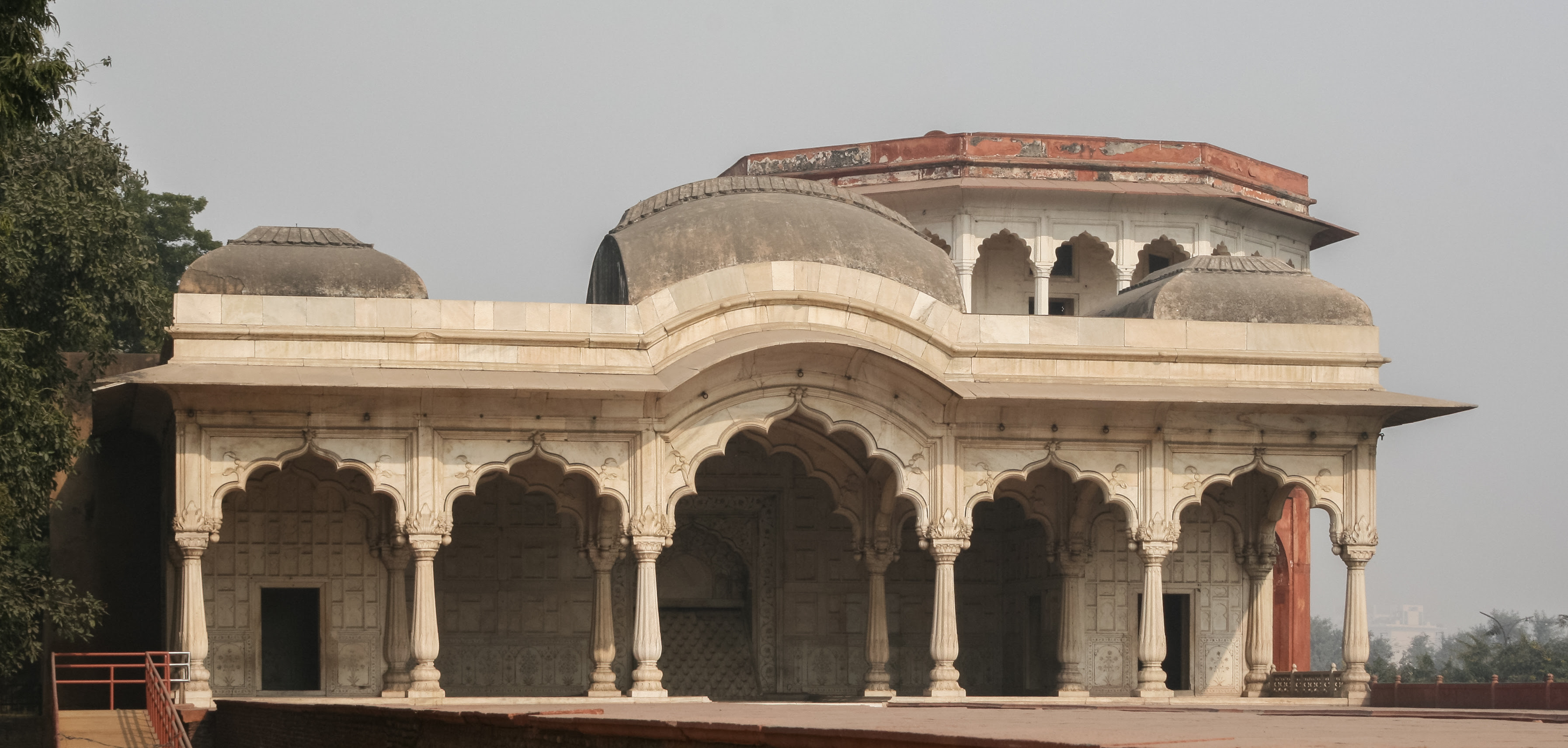Red Fort : Qila-i-Mubarak
Red Fort stands on the zenith point in the history of Mughal Architecture. The outskirts of its strong walls are about 2.41 Kilometers. The two main Gateways of this fort are Lahore Gate on the west and Delhi Gate on the south respectively. The main entrance is the Lahore Gate. The western gateway is bordered by the arcaded apartments leading to the palaces known as the Chatta Bazaar popularly known as Meena Bazaar in the Mughal times, the shopping paradise for the Ladies. As you move along the passage of Chatta Chowk, you will come across Naqqar Khana, also called drum house. This place was used by the musicians who played thieir bands every day. The place is now used as a war museum. There is another open space along the main entrance path which served as the courtyard of the Diwan-i-Am. An ornate throne balcony can be seen at the eastern wall of the Diwan-i-Am. Nobles used to gather here facing each other depending on their ranks and hierarchy. A gateway called Lal Purdah can be seen on the left of the Diwan-i-Am which was the way out of the court.
On the left you will find a royal bath. Close to the royal bath, there is a mosque or private royal chapel. The mosque was built by Aurangzeb which was used for offering prayers. Behind the throne, you will find the imperial apartments which consist of a row of pavilions. These pavilions are covered by continuous water channels called the Nahr-i-Behisht. There is a tower called Shah Burj at the north east corner of the fort which acts as a source for water from the river Yamuna to these water channels. The whole design within the palace is based on the theme of "Paradise- as described in the Koran. An inscription within the palace reads "If there be a paradise on earth, it is here, it is here".
 |
| Diwan-i Khas |
Another pavilion is Diwan-i-Khas, a lavishly decorated hall that was used for mistrial and court gatherings. It is the best among all the pavilions because of its architecture specialty which includes designs with floral pietra patterns on the columns and the wooden painted ceiling. The place was used by the emperor to entertain his friends and people close to him. The balcony on the top, also called the Jharoka, was used by the emperor to address the crowd. As you move beyond the private apartments, you will notice a palace called the Rang Mahal or the Palace of Colors. Beyond the Rang Mahal, there is a building which has now been converted into a museum. The museum contains reminiscence of the great Mughal era, the costumes and the pictures of the Mughal era.
Visitors of the Red Fort also get a chance to retrace the history of its construction and intrigues of royal court of Mughal era during the son-et-lumiere(a sound and light show). The show unraveling the history of Mughal era is one of the must do things to understand the cultural and historical importance of this resplendent fort. Although the existing structures are not even one third of the original fort, the ruins and existing buildings stand testimony to the heritage and architecture of Mughal era in India. It is a land mark place in India, the site from where prime minister of India addresses the public on the occasion of 15th August.



Comments